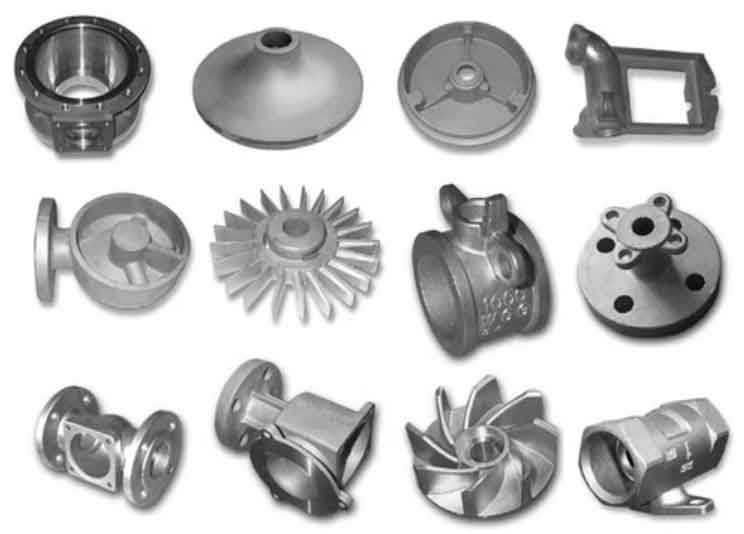The automotive industry relies heavily on casting parts for various components due to their ability to provide strength, durability, and complex shapes. Here are some common casting parts used in the automotive industry along with their manufacturing techniques:

- Engine Blocks: Engine blocks are critical components of automotive engines. They are typically made through sand casting or investment casting processes. Sand casting is a widely used technique where a mold is created using compacted sand, and molten metal is poured into the mold to form the engine block. Investment casting, also known as the lost wax casting process, involves creating a wax pattern, coating it with ceramic, and then melting the wax to create a mold for pouring the molten metal.
- Cylinder Heads: Cylinder heads sit on top of the engine block and contain the combustion chambers and valves. They are commonly produced through sand casting or die casting. Sand casting allows for the creation of intricate designs and complex shapes, while die casting utilizes reusable metal molds to produce high-quality, precise cylinder heads.
- Transmission Housings: Transmission housings enclose the gears and other components of the automotive transmission system. They are often manufactured through die casting, which enables the production of lightweight and structurally sound housings with high dimensional accuracy.
- Brake Calipers: Brake calipers are responsible for applying pressure to the brake pads, causing them to squeeze against the brake discs to slow down or stop the vehicle. They are typically manufactured through die casting due to its ability to produce complex shapes and maintain dimensional accuracy. High-performance brake calipers may also be produced through investment casting or forging for enhanced strength and performance.
- Suspension Components: Suspension components, such as control arms, knuckles, and brackets, play a crucial role in the vehicle’s ride and handling. These parts are commonly produced through investment casting, sand casting, or forging techniques, depending on the desired strength, weight, and complexity of the component.
- Intake Manifolds: Intake manifolds deliver air or air-fuel mixture to the engine cylinders. They can be manufactured using various techniques such as sand casting, die casting, or even 3D printing. The choice of manufacturing method depends on factors such as cost, complexity, and desired material properties.
- Exhaust Manifolds: Exhaust manifolds collect exhaust gases from the engine cylinders and direct them to the exhaust system. They are typically produced through sand casting or investment casting processes. Due to the high-temperature environment, these manifolds are often made from heat-resistant materials like cast iron or stainless steel.
These are just a few examples of casting parts used in the automotive industry. The selection of the manufacturing technique depends on factors such as component complexity, required strength, weight, and cost considerations. Casting processes offer the flexibility to produce automotive components with the desired characteristics, meeting the stringent requirements of the industry.
